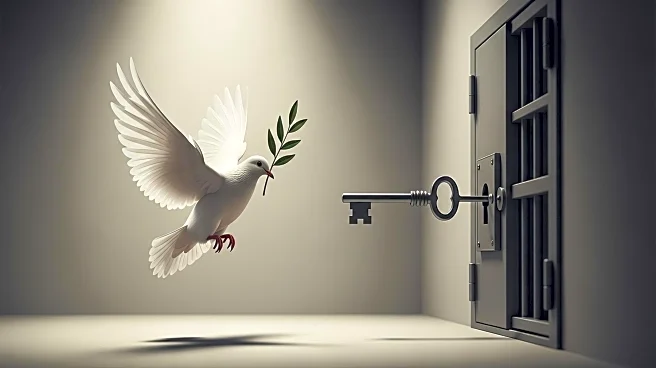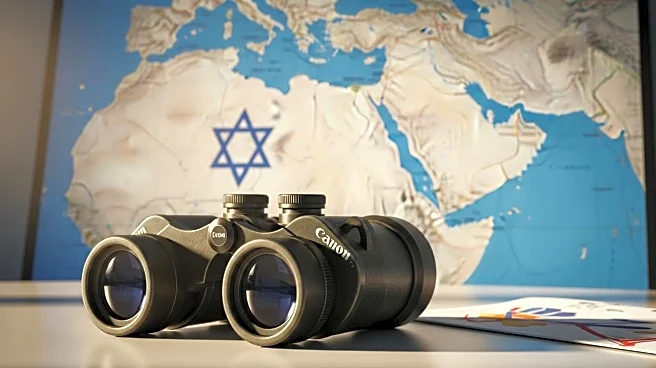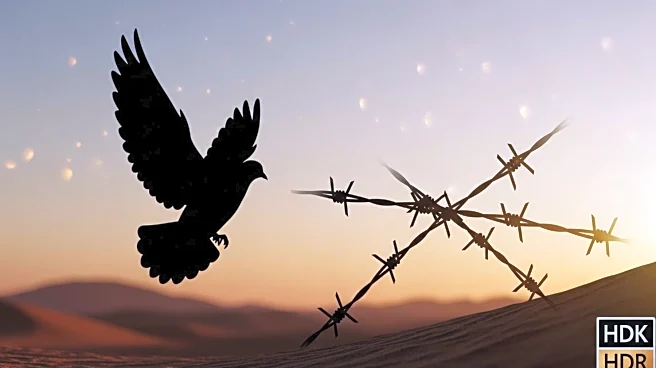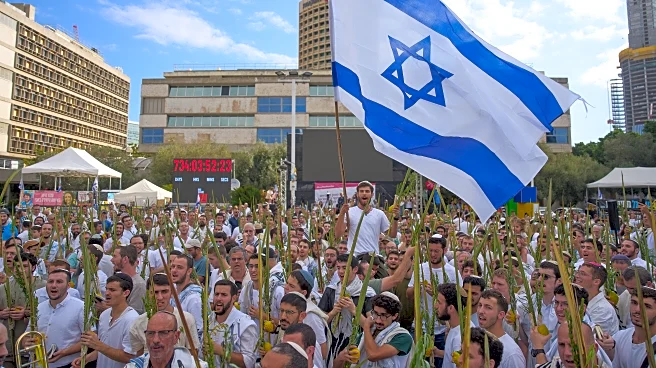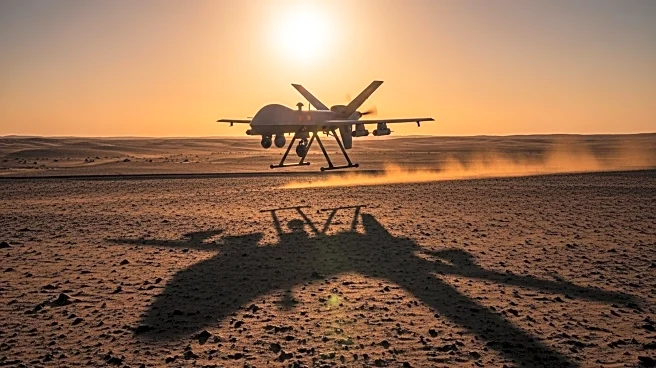What's Happening?
Residents of Israel's Gaza border region are cautiously welcoming a ceasefire after two years of conflict with Hamas. The ceasefire, announced by President Trump, comes after relentless fighting and significant loss, including the massacre of civilians by Hamas terrorists on October 7, two years ago. The region remains a site of remembrance, with memorials for the murdered and kidnapped lining fences and walls. Despite the ceasefire, the area is still haunted by the memory of the attack and the ongoing absence of hostages taken by Hamas. Residents express a mix of relief and skepticism, fearing that peace may not last and that the hatred sown by the war will persist.
Why It's Important?
The ceasefire is significant as it offers a potential end to the violence that has disrupted lives in the Gaza border communities for two years. However, the skepticism among residents highlights the fragile nature of peace in the region. The ongoing presence of hostages and the destruction in Gaza underscore the deep-seated issues that remain unresolved. The ceasefire's impact extends beyond immediate relief, as it raises questions about future relations between Israel and Gaza, the potential for rebuilding, and the long-term prospects for peace. The situation affects not only local residents but also broader geopolitical dynamics in the Middle East.
What's Next?
The future remains uncertain as residents and stakeholders watch to see if the ceasefire holds. There is a possibility of renewed dialogue between Israel and Hamas, which could lead to more stable relations. However, the destruction in Gaza and the deep-seated animosity present significant challenges to lasting peace. The return of hostages is a critical factor that could influence the healing process for affected communities. Political leaders and civil society groups may need to engage in dialogue and reconciliation efforts to address the underlying issues and prevent further conflict.
Beyond the Headlines
The ceasefire highlights the complex ethical and cultural dimensions of the conflict. The war has left a legacy of trauma and loss that will take years to heal. The destruction in Gaza raises questions about the humanitarian impact and the responsibilities of both sides in rebuilding and reconciliation. The situation also reflects broader issues of territorial disputes and the challenges of achieving peace in a region marked by historical tensions. The ceasefire could be a step towards breaking the cycle of violence, but it requires sustained efforts from all parties involved.

